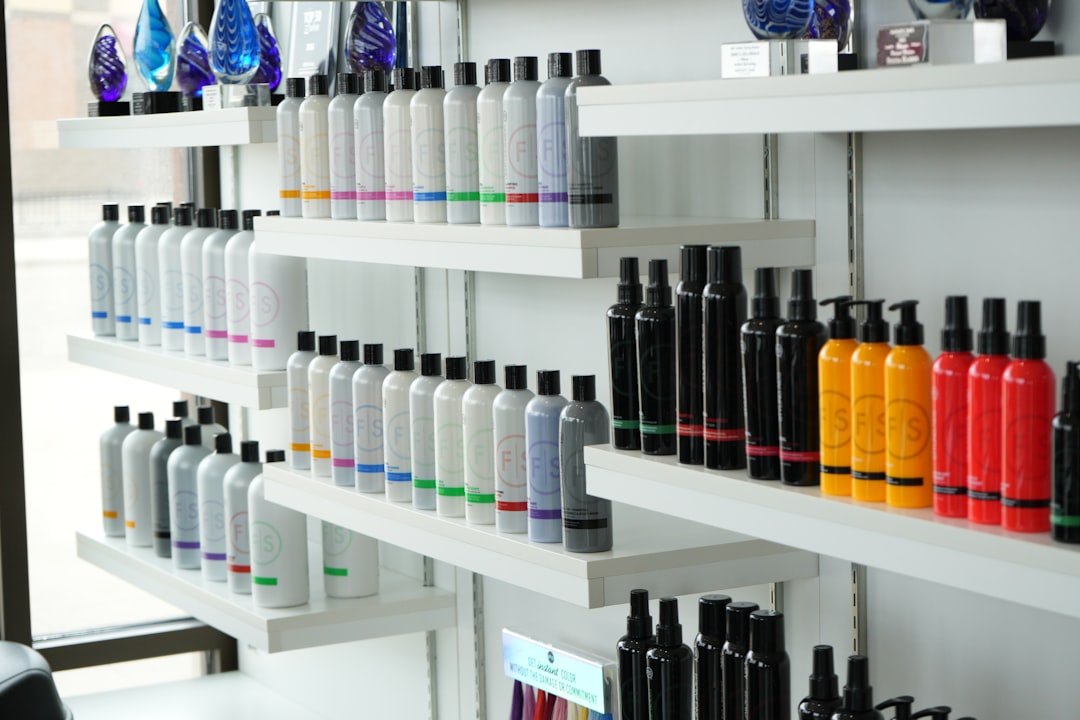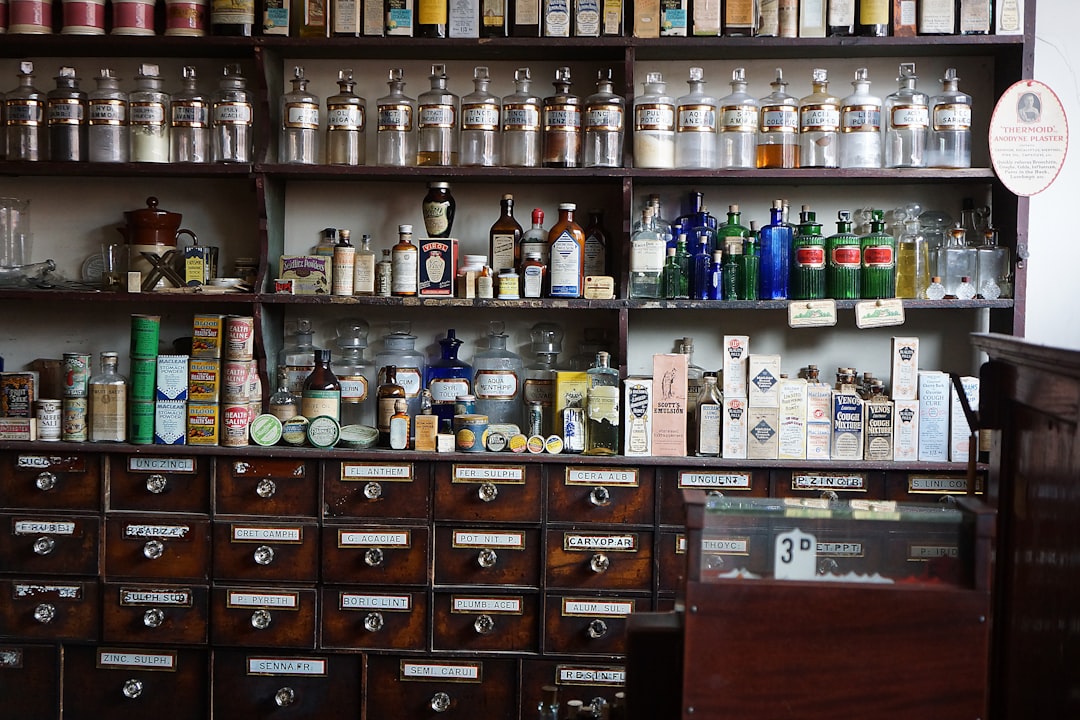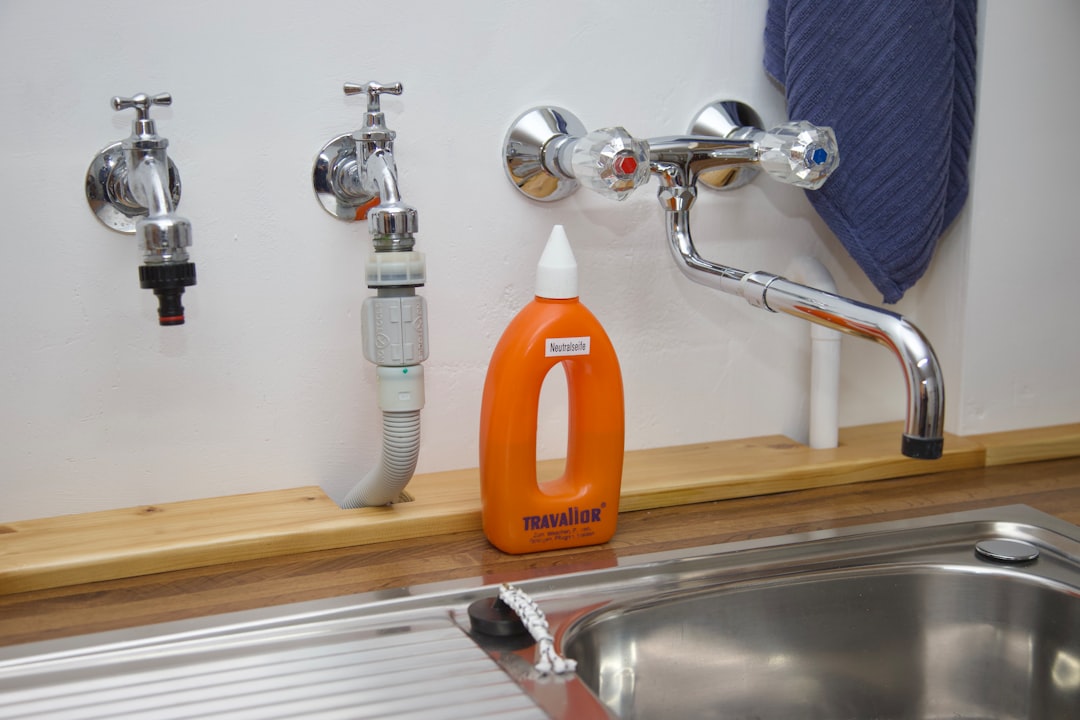
Supercharge your lead generation with a FREE Google Ads audit - no strings attached! See how you can generate more and higher quality leads
Get My Free Google Ads AuditFree consultation

No commitment
Supercharge your lead generation with a FREE LinkedIn Ads audit - no strings attached! See how you can generate more and higher quality leads
Get My Free Google Ads AuditFree consultation

No commitment
Supercharge your lead generation with a FREE Meta Ads audit - no strings attached! See how you can generate more and higher quality leads
Get My Free Google Ads AuditGet My Free LinkedIn Ads AuditGet My Free Meta Ads AuditFree consultation

No commitment
Supercharge your lead generation with a FREE Google Ads audit - no strings attached! See how you can generate more and higher quality leads
Get My Free Google Ads AuditFree consultation

No commitment
In today's multifaceted marketing environment, the goal for lubrication services is to cohesively integrate online and offline channels to achieve effective B2B marketing. Online platforms such as social media enhance digital brand reach, email campaigns nurture ongoing customer relationships, and SEO boosts organic visibility. Conversely, offline avenues like trade shows allow for personal connections, direct mail provides tangible marketing touchpoints, and appearances in industry publications position thought leadership. Within this interconnected ecosystem, Google Ads fulfills a crucial middle-funnel function by engaging high-intent prospects precisely when they're seeking solutions. This bridges the gap between general awareness initiatives and the sales funnel. For lubrication services, Google Ads offers the potential to align online and offline marketing strategies seamlessly:

Modern lubrication service providers use digital marketing to efficiently surface and engage high-value prospects. Google Ads platform enables companies to capture buyers precisely when they demonstrate service intent, boosting relevant lead flow and minimizing wasted spend.
A data-centric strategy is essential for paid search success in this industry. Integrating Google Ads with your broader marketing stack ensures that insights from every touchpoint inform budget allocation, creative direction, and audience targeting. When marketers connect website visitor identification with Google Ads, they can identify not just anonymous clicks but actual businesses and decision-makers behind those visits. This approach transforms unknown traffic into actionable leads, allowing ad dollars to follow real buying signals.
Keyword and audience targeting in lubrication services demands specificity and intent alignment. Using search data, marketers pinpoint high-converting keywords, such as “mobile auto lube near me” or “fleet oil change services.” Audience segmentation by urgency, company size, and geographic location focuses spend on prospects with the highest lifetime value. When platforms enable dynamic audience updates—reflecting real-time engagement and buyer stage—ad groups evolve automatically as leads move through the funnel.
Maximizing conversion rates requires landing pages and creative content tailored for distinct service offerings. Alignment between ad copy, landing experience, and user intent lifts form fills and booked appointments. Advanced solutions allow revenue teams to sync enriched CRM records with Google Ads, ensuring every conversion is attributed accurately, whether the lead books online or calls directly. This level of integration provides a true measure of ROI and reveals which campaigns drive net-new revenue.
Performance optimization is ongoing, as B2B marketers monitor metrics such as cost per lead, conversion rates, and pipeline contribution. By leveraging in-market behavioral data, teams quickly shift budget toward high-performing accounts and away from low-intent traffic. The continuous feedback loop between ad performance, website analytics, and CRM outcomes helps marketers refine targeting, messaging, and offers, driving incremental gains in lead quality and deal velocity.
Cross-channel integration further strengthens campaign impact. Combining Google Ads with other digital channels such as LinkedIn or programmatic display ensures consistent messaging and greater reach. When marketers sync audiences and intent data across platforms, prospects receive coordinated communications that reinforce value and encourage conversion. This holistic approach transforms online advertising for auto repair shops and mechanical services, empowering revenue teams to execute high-performing, unified demand generation strategies. To see how this works in practice, get started for free with Sona.

Lubrication services operate in a highly specialized, demand-driven market where decision-makers prioritize reliability and rapid response. Google Ads delivers a measurable path to capturing these high-intent buyers at the exact moment they are searching for solutions.
In lubrication services, identifying the businesses behind anonymous site visits is key to prioritizing outreach and maximizing conversion potential. Purpose-built tools make it possible to capture this intelligence in real time, ensuring that every ad dollar is tied to a qualified opportunity. If you’re ready to see these capabilities in action, get started for free with Sona.

Failure to capture lead information early allows competitors to intercept high-value prospects. Modern platforms enable seamless coordination between ad click, CRM entry, and remarketing workflows, empowering lubrication service providers to act on in-market signals instantly and maximize every opportunity for conversion. Get started for free with Sona.

High-growth lubrication services teams are advancing beyond basic platforms to discover new sources of demand. By leveraging granular data, these teams identify untapped intent signals and elevate performance with targeted, industry-specific strategies. Marketers focusing on digital marketing for lubrication businesses are seeing accelerated returns by diversifying their keyword portfolios and adapting messaging to match user behavior. For an overview of online advertising solutions, visit the Google Ads platform features.
Feature-focused content consumption is a powerful signal of buying intent in lubrication services and auto repair. By monitoring and responding to these signals, teams can create customized ad audiences that unlock upsell and cross-sell potential, while simultaneously reducing acquisition costs. For additional tactics, explore retargeting strategies tailored to auto repair and lubrication services. If you’re ready to scale your campaigns, get started for free with Sona.
Effective audience segmentation is foundational for maximizing the performance of Google Ads platform. Marketers who align segmentation to the customer journey efficiently direct budgets toward audiences most likely to convert, while minimizing wasted spend and improving overall return on ad investment. This approach is particularly valuable for lubrication businesses, where service needs can vary dramatically between different customer types.
For lubrication service providers, leveraging these segmentation principles with robust data integration transforms generic campaigns into precision-targeted growth engines. This unified approach supports digital marketing for lubrication businesses, online advertising for auto repair shops, and advanced Google Ads strategies for mechanical services—all while enabling fast adaptation to shifting customer needs and market conditions. Ready to elevate your campaigns? Get started for free with Sona.

| Industry | Keyword | Monthly Search Volume | Competition Level | Low Bid | High Bid |
| Lubrication Services | lubrication services | 70 | LOW | 1.45 | 5.1 |
| Lubrication Services | lube oil change near me | 1300 | MEDIUM | 2.12 | 6.12 |
| Lubrication Services | lube oil change | 1600 | MEDIUM | 1.85 | 5.83 |
| Lubrication Services | oil lube near me | 2400 | MEDIUM | 2.06 | 5.82 |
| Lubrication Services | oil and lube near me | 2400 | MEDIUM | 2.06 | 5.82 |
| Lubrication Services | grease fitting | 6600 | HIGH | 0.37 | 1.89 |
| Lubrication Services | lube | 110000 | HIGH | 0.65 | 2.46 |
Capturing high-intent prospects for lubrication services requires an advanced approach to keyword strategy. Aligning keyword selection with real customer intent ensures each dollar spent drives measurable pipeline impact and better marketing efficiency. For marketers, leveraging real-time intent signals makes it possible to dynamically adjust keyword lists as search trends shift, ensuring ads always reach audiences with the highest likelihood to convert. Targeting phrases like "eco-friendly oil change near me," "mobile auto lube appointment," or "fleet lubrication services" allows campaigns to intercept prospects ready to book—boosting conversion rates and minimizing wasted spend by avoiding broad, low-value terms.
Precision targeting and accurate ROI measurement differentiate top-performing campaigns in the lubrication services sector. By unifying data across CRM, advertising, and analytics, marketers can identify which keywords consistently drive qualified leads and optimize budget allocation for maximum impact. Seamless integration with platforms like Google Ads enables continuous feedback on lead quality and performance. Channel synergy is amplified when audience and intent data from all touchpoints are unified, eliminating guesswork and creating a foundation for scalable digital marketing for lubrication businesses. To streamline your campaigns and maximize every ad dollar, get started for free with Sona.

Revenue teams in lubrication services are navigating a highly competitive landscape, where unified data and actionable insights set top performers apart. Modern organizations need strategies that go beyond standard campaigns, ensuring every touchpoint builds brand authority and drives measurable business outcomes.
Disconnected campaigns can create confusion and dilute your brand impact. Consistency across every channel—search, display, video, and email—is essential for delivering a unified customer experience. Integrating buyer stage data with ad platforms ensures messaging aligns with each phase of the journey, driving better engagement and higher conversion rates across your digital marketing for lubrication businesses. For a deeper dive into optimizing these tactics, see retargeting strategies.
Ready to take your lubrication services marketing to the next level? Get started for free with Sona.
Maximizing Google Ads for lubrication services requires a multi-layered approach that centers on precision, relevance, and actionable data. Revenue teams benefit most when campaigns are engineered to capture intent, segment audiences effectively, and foster seamless user experiences that match the urgency and needs of auto care customers.
For lubrication service providers, leveraging advanced, unified data platforms accelerates campaign performance and sustainability. By combining sharp targeting, audience intelligence, and end-to-end attribution, digital marketing for lubrication businesses moves from guesswork to growth-driven execution. Ready to elevate your ad strategy? Get started for free with Sona.
In conclusion, leveraging Google Ads for your lubrication services business is a powerful way to drive growth and increase visibility in a competitive market. By understanding the nuances of keyword selection, ad targeting, and budget optimization, you can craft campaigns that not only reach your target audience but also convert them into loyal customers.
Throughout this article, we explored the challenges of advertising in the lubrication services industry, highlighting effective strategies and practices tailored to your niche. From identifying profitable services to promoting them with compelling ad copy, the insights presented are designed to equip you with the tools necessary for success.
By implementing these strategies, you open the door to new opportunities and possibilities for your business. Embrace the potential of digital advertising to transform your reach and impact, ensuring that your services stand out to those who need them most.
To truly harness the power of these insights and elevate your marketing efforts, start for free to experience the platform and its capabilities today.
Effective strategies include targeting high-intent keywords, integrating data-centric approaches, using audience segmentation, and aligning ad copy with landing pages to boost conversion rates.
Targeting the right audience involves using specific keywords, segmenting audiences by urgency and location, and utilizing dynamic audience updates to refine targeting as leads move through the funnel.
The best services to advertise include mobile auto lube, fleet oil change services, and premium offerings like industrial lubrication contracts or sustainable solutions.
Success can be tracked through conversion rates, cost per lead, and pipeline contribution, using tools that sync enriched CRM records with Google Ads for accurate revenue attribution.
Google Ads can be cost-effective by focusing budget on high-intent buyers, optimizing for conversion rates, and continuously refining targeting using in-market behavioral data.
Join results-focused teams combining Sona Platform automation with advanced Google Ads strategies to scale lead generation

Connect your existing CRM

Free Account Enrichment

No setup fees
No commitment required

Free consultation

Get a custom Google Ads roadmap for your business
Join results-focused teams combining Sona Platform automation with advanced Meta Ads strategies to scale lead generation

Connect your existing CRM

Free Account Enrichment

No setup fees
No commitment required

Free consultation

Get a custom Google Ads roadmap for your business
Join results-focused teams combining Sona Platform automation with advanced LinkedIn Ads strategies to scale lead generation

Connect your existing CRM

Free Account Enrichment

No setup fees
No commitment required

Free consultation

Get a custom Google Ads roadmap for your business
Join results-focused teams using Sona Platform automation to activate unified sales and marketing data, maximize ROI on marketing investments, and drive measurable growth

Connect your existing CRM

Free Account Enrichment

No setup fees
No commitment required

Free consultation

Get a custom Google Ads roadmap for your business
Over 500+ auto detailing businesses trust our platform to grow their revenue
Join results-focused teams using Sona Platform automation to activate unified sales and marketing data, maximize ROI on marketing investments, and drive measurable growth

Connect your existing CRM

Free Account Enrichment

No setup fees
No commitment required

Free consultation

Get a custom Google Ads roadmap for your business
Over 500+ auto detailing businesses trust our platform to grow their revenue
Join results-focused teams using Sona Platform automation to activate unified sales and marketing data, maximize ROI on marketing investments, and drive measurable growth

Connect your existing CRM

Free Account Enrichment

No setup fees
No commitment required

Free consultation

Get a custom Google Ads roadmap for your business
Over 500+ auto detailing businesses trust our platform to grow their revenue
Our team of experts can implement your Google Ads campaigns, then show you how Sona helps you manage exceptional campaign performance and sales.
Schedule your FREE 15-minute strategy sessionOur team of experts can implement your Meta Ads campaigns, then show you how Sona helps you manage exceptional campaign performance and sales.
Schedule your FREE 15-minute strategy sessionOur team of experts can implement your LinkedIn Ads campaigns, then show you how Sona helps you manage exceptional campaign performance and sales.
Schedule your FREE 15-minute strategy sessionOur team of experts can help improve your demand generation strategy, and can show you how advanced attribution and data activation can help you realize more opportunities and improve sales performance.
Schedule your FREE 30-minute strategy sessionOur team of experts can help improve your demand generation strategy, and can show you how advanced attribution and data activation can help you realize more opportunities and improve sales performance.
Schedule your FREE 30-minute strategy sessionOur team of experts can help improve your demand generation strategy, and can show you how advanced attribution and data activation can help you realize more opportunities and improve sales performance.
Schedule your FREE 30-minute strategy sessionOur team of experts can help improve your demand generation strategy, and can show you how advanced attribution and data activation can help you realize more opportunities and improve sales performance.
Schedule your FREE 30-minute strategy session





Launch campaigns that generate qualified leads in 30 days or less.
